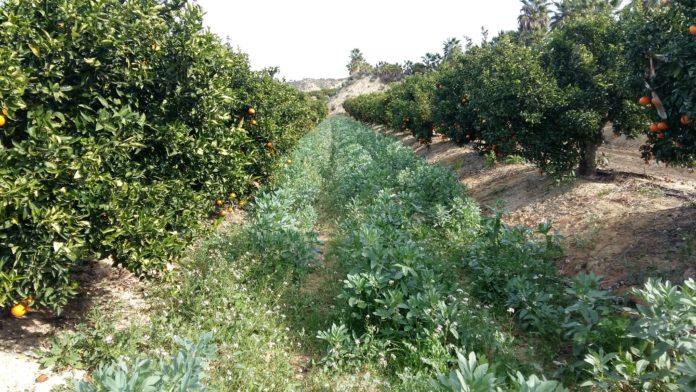Diverfarming’s project study compares traditional mandarin monocropping with intercropping with herbaceous crops, and the use deficit irrigation.
The shift to intensive agriculture in Europe has resulted in agricultural practices that are more focused on increasing yield and decreasing costs. They also depend heavily on external sources for agrochemicals or energy. These intensive monocropping systems have caused biodiversity losses, water contamination, high levels of greenhouse gas emissions, and reduced ecosystem services.
The European Diverfarming Project has been experimenting with diversification of crops across the EU. It is looking for the best ways to combine crops and focusing more on reducing inputs in order to find the best options to increase sustainability and resilience in the European agricultural sector. It is important to understand the economic and environmental impacts of these practices.
A team of researchers from the Universidad Politcnica de Cartagena performed a life cycle assessment of the crop, as well as an evaluation of the farm’s income and costs for the three-year period of the experiment. This was done in order to determine the environmental impact and economic performance of the introduction of herbaceous plants among the alleys of mandarin trees in the Region of Murcia.
Although the area of cultivation increased with the introductions of herbaceous crops (in this instance purslane, cowpeas, broad beans and a barley/vetch mix), there were no adverse effects in terms of acidification, exhaustion, or global warming. Intercropping was not associated with any additional contamination or environmental impacts. This, along with the benefits of increased nitrogen and organic content in soil and reduced erosion and runoff makes the introduction herbaceous crops to the alleys where mandarin trees are a good sustainable option for environmental protection to address the sector’s current challenges.
Economic security is a key component to adopting diversified farming systems. The economic analysis shows that intercropping can result in an increase in production costs. This is mostly due to a higher demand for labour than monocropping. The study also concluded that intercropping can provide economic benefits if it is done correctly. The results showed that intercropping the mandarin crop with broad beans and purslane could be profitable, and lower the risk of volatile prices in the main crop.
These systems can be used to help move towards more sustainable and economically profitable agricultural systems by taking into account all the possible environmental and economic benefits of intercropping. These practices can be driven by the valorisation of agricultural products that are more environmentally friendly and the support of public funding (e.g. direct assistance to growers who use intercropping).










